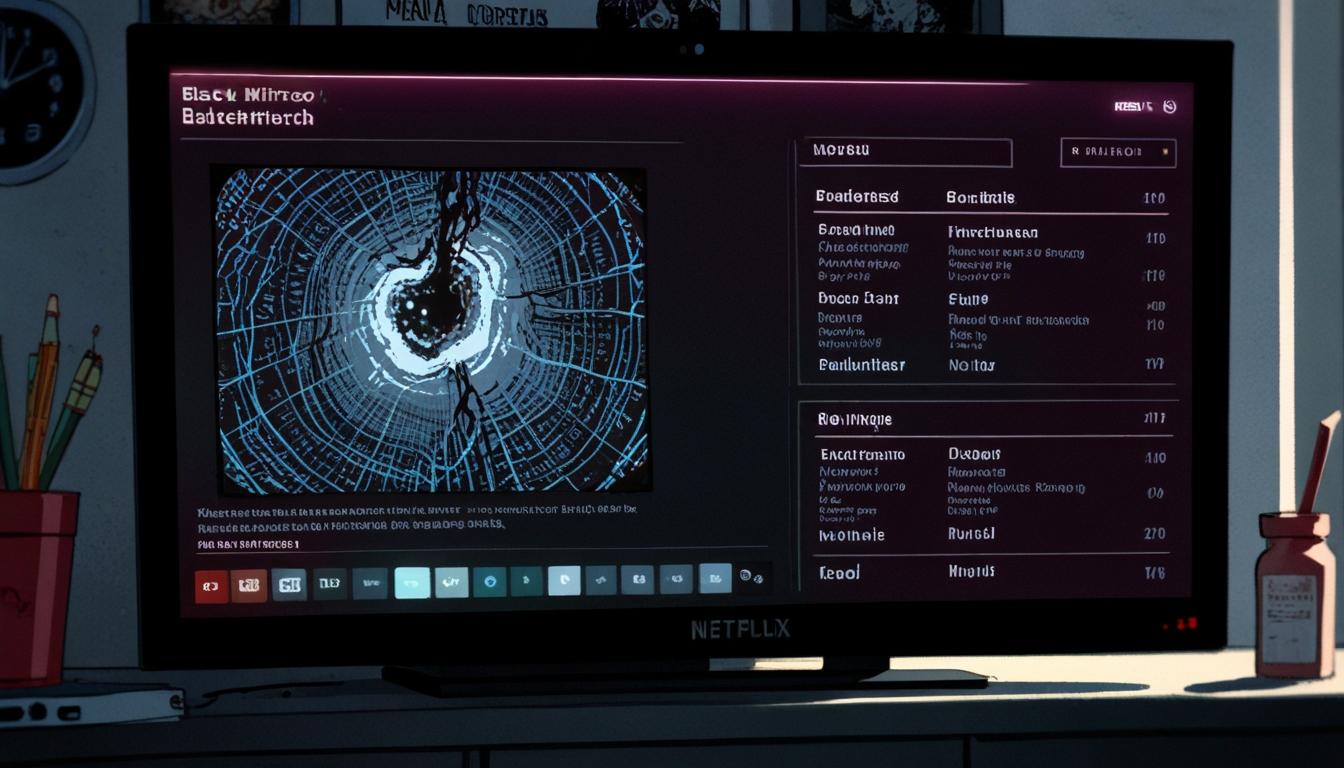Netflix has long been a trailblazer in the streaming industry, consistently pushing boundaries and redefining how stories are consumed. However, the announcement that interactive titles such as “Black Mirror: Bandersnatch” and “Unbreakable Kimmy Schmidt: Kimmy vs. The Reverend” will be removed from the platform on May 12, 2025, signals a noteworthy shift in the company's content strategy. This move indicates not only a retreat from interactive storytelling but also a possible end to Netflix's adventurous chapter in this innovative format.
“Black Mirror: Bandersnatch,” released in December 2018, represented a watershed moment for Netflix by allowing viewers to make choices that influenced the narrative, effectively merging gaming with traditional storytelling. This approach captivated audiences and sparked discussions on the future of narrative engagement, demonstrating that viewers could engage more actively in shaping a story. Equally, “Unbreakable Kimmy Schmidt: Kimmy vs. The Reverend” offered fans a chance to direct the direction of the plot, featuring various endings based on viewer selections. Such pioneering efforts highlighted Netflix’s eagerness to explore formats beyond conventional storytelling, enticing viewers with a more participatory experience.
Despite initial excitement and critical acclaim, Netflix’s retreat from interactive formats raises important questions about viewer preferences and engagement trends. Analyst insights suggest that while interactive content had its moment in the sun, the majority of Netflix's audience appears to favour binge-watching traditional narratives. The technology, once considered cutting-edge, is now seen as limiting, with reports indicating that Netflix has decided to redirect its focus towards enhancing other technological innovations.
Metrics surrounding viewer engagement with interactive programming have evidently fallen short of expectations, as pointed out by several industry commentators. A Netflix spokesperson noted that the technology served its purpose but has since become restrictive as the streaming giant pivots back to more familiar fare. With only a handful of interactive titles remaining—namely “Radical You” and “You vs. Wild”—the decision appears to be driven by a strategic desire to optimise content that resonates more effectively with subscribers.
As fans of “Black Mirror” process this transition, there is a bittersweet sentiment surrounding the series, which has remained a standard for thought-provoking narratives over the years. The decision to shift away from interactive storytelling does not imply a reduction in creative output. Instead, it underscores a renewed commitment to crafting compelling narratives that align with current viewer inclinations.
The removal of these interactive titles marks an evolution in the ever-expanding world of streaming content. While the vibrant interactivity that once promised to revolutionise viewing experiences may be receding, Netflix remains poised to invest heavily in original programming across various genres. The history of “Bandersnatch” and “Kimmy Schmidt” will undoubtedly linger as notable examples within the streaming landscape, illustrating both the risks and rewards of innovation.
In conclusion, Netflix’s decisive shift away from interactive content reflects broader patterns in viewer behaviour and content consumption. As it looks towards a future anchored in traditional storytelling, the platform continues to explore creative avenues. Though the interactive era may be coming to a close, the potential for engaging narratives in various formats remains vast, opening up new possibilities for storytelling as technology and audience preferences evolve.
Reference Map
- Paragraphs 1, 2, 3, 4
- Paragraph 4
- Paragraph 4
- Paragraph 2
- Paragraph 3
- Paragraph 3
- Paragraph 2
Source: Noah Wire Services
